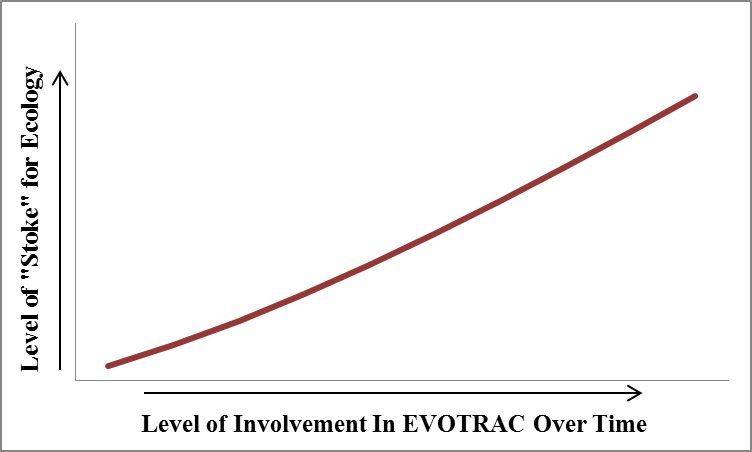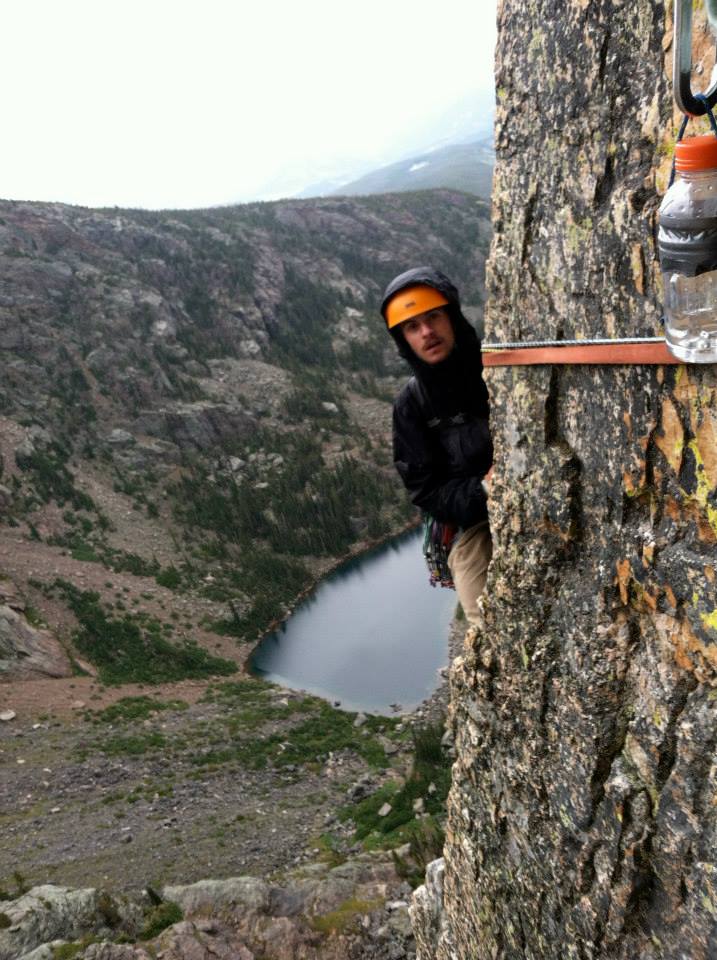
Lessons Learned as an ESS undergraduate
by Dusty Gannon
As a timid freshman, wrinkling a letter of recommendation from my high-school science teacher between my sweaty fingers, I walked into Laurel Hall on the CSU campus. I poked my head around a corner and into one of the dark rooms on the first floor. Quietly, I inquired to what looked like an empty room,
“Brian?”
A young graduate student leaned back in his chair to see around a divider separating the room into cubicle-like sections. He stood up. He was tall and thin and his smile reassured me that I was in the right place.
“Are you Dustin?” he asked, already knowing the answer.
To this day, I don’t know what I said or what he saw in me during that interview. I was an awkward (still am, though hopefully less so now), undeclared freshman with no background in molecular biology. However, by some stroke of luck, he hired me, and I began my work in Dr. Chris Funk’s lab the next week.
I have since contributed to Brian’s PhD work, and a larger interdisciplinary project, Evolutionary and Ecological Variability in Organismal Trait Response with Altitude and Climate (EVOTRAC). We are looking at the elevation ranges of aquatic insects from Colorado and Ecuador to test the Climate Variability Hypothesis (CVH), or the idea that organisms in the temperate zone are better adapted to varying climatic conditions than those in the tropics (Dobzhansky, 1950), and therefore less vulnerable to climate change. Given support for the CVH, we would expect to see larger elevation range breadths in Colorado. Personally, I have been working in molecular lab, “DNA Barcoding” insects. Because most species in Ecuador have not been described, it has been my job (as well as other lab techs’) to barcode thousands of insect specimens to define species-level groupings of individuals. We can then compare similar taxa between the two latitudes in the analysis.
EVOTRAC has already generated a great deal of useful data, as well as results important in determining my path here at CSU (Figure 1).

After joining the Funk lab, my thoughts began to revolve around ecology. I enrolled in a general ecology course with Dr. Stephen Ogle and Dr. Matt Wallenstein of NREL my sophomore year and couldn’t get enough. The class exposed me to an array of general ecological concepts, and to a new major degree program. Through an announcement in class, I learned of the Department of Ecosystem Science and Sustainability (ESS). I was immediately enthralled with the idea of taking more ecology classes, and the prospect of studying relevant world issues in sustainability. I signed up for ESS later that day, to be a “guinea p…”, I mean, “pioneer” for the new program.
As a pioneer, each bend in the river and each mountain top hide the unknown. Some of these unknowns turn out to be pleasant surprises, others are not so pleasant. In fact, it’s extremely rare that all goes well on the first path one chooses. Similarly, every ESS class I have taken is a novel course, so there has been a lot of give and take. I have had to remind myself on occasion to be calm and understanding when classes are not polished educational machines. A large portion of my class work has been experimental assignments and projects. These projects are often clunky. Luckily, there is a second side to that coin. For example, in the capstone course, ESS 440, we have the opportunity to pave the way on what could be a long-lasting survey of the biodiversity at Sylvan Dale Ranch near the mouth of the Big Thompson Canyon. I am genuinely excited to organize a BioBlitz that will generate valuable data and lay out an outline for future surveys. We are lucky to have the opportunity to be part of the creation process, and to start research of our own, something I now wish to pursue for a career.
My interests in evolutionary ecology and my desire to work in the field stem primarily from my work in the Funk lab; however, I believe that the diversity of classes and topics covered in the ESS curriculum will help me bring new perspectives to research questions. Thinking about systems and connections, as ESS prompts its students to do, is valuable in ecology, as well as many aspects of life. I intend to retain that way of thinking, and use it to guide my future research.
References: Dobzhansky, T. (1950). Evolution in the tropics. American Scientist. 38: 209-221.
 Dusty Gannon is a senior in Ecosystem Science and Sustainability. He is interested in evolutionary ecology and how it can provide insight for conservation efforts, and is currently working on a project looking at rates of Isolation by Distance in aquatic insects from Ecuador and Colorado as part of the Evolutionary and Ecological Variability in Organismal Trait Response with Altitude and Climate project. His favorite activities include climbing (rocks, ice, and snow), skiing, making bad puns, and looking at things under my microscope. His favorite foods are beer and anything my girlfriend cooks.
Dusty Gannon is a senior in Ecosystem Science and Sustainability. He is interested in evolutionary ecology and how it can provide insight for conservation efforts, and is currently working on a project looking at rates of Isolation by Distance in aquatic insects from Ecuador and Colorado as part of the Evolutionary and Ecological Variability in Organismal Trait Response with Altitude and Climate project. His favorite activities include climbing (rocks, ice, and snow), skiing, making bad puns, and looking at things under my microscope. His favorite foods are beer and anything my girlfriend cooks.